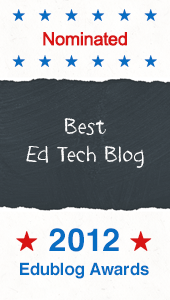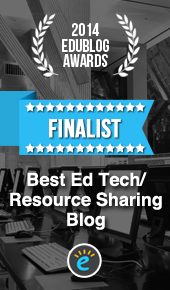Visual literacy is a 21st Century Skill that requires students to interpret, use and create media in ways to encourage critical thinking, decision-making, communication and learning. With easy access to copyright-friendly digital images and a growing number of web 2.0 resources for manipulating them, it's certainly worth offering students the option of conveying a message visually. Let's take a closer look at one way to design effective learning experiences to promote visual literacy.
It's always a good idea to start with an Essential Question to drive the learning experience. Students can work in pairs or individually to create images that answer the question visually, then all of the work can be published online for an engaging culminating activity to allow students to share knowledge and develop a deeper understanding of the whole.
 |
| Mosaic Maker combined with Motivator |
- mosaic maker
- motivator
- magazine cover
- movie poster
- captioner
After the images are created there are plenty of ways to publish and use them in the classroom for a culminating learning activity. Assigning an engaging learning task related to the Essential Question to be discovered through the sharing of projects will give students an opportunity to bring it all together and develop a big-picture understanding. Here are a few suggested tools to use for a culminating activity:
- Pinterest: Create a Pinterest Board specifically for the purposes of displaying and evaluating the projects.
- VoiceThread: Upload the images to VoiceThread and have students hold online conversations about the media.
- Wikispaces: Publish the images in Wikispaces and utilize the discussion feature to generate focused discussions about the individual or small group contributions.
Finally, when engaging students in this type of project, it's important to take advantage of opportunities for addressing Digital Citizenship by including appropriate lessons on Internet safety and copyright.















1 comments:
Thank you.
Reply